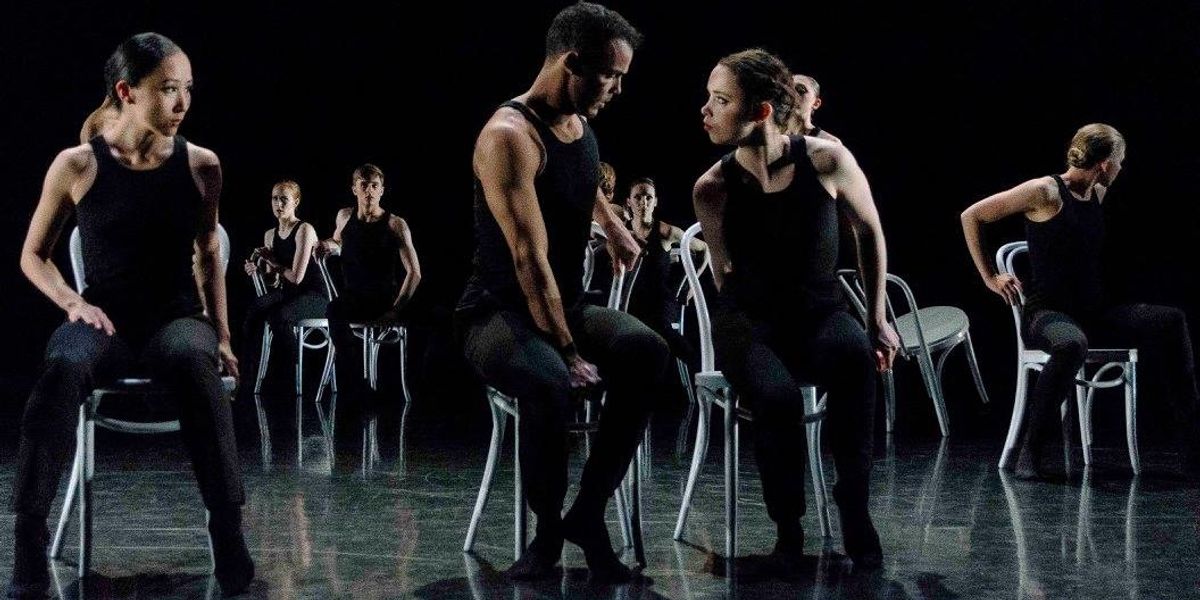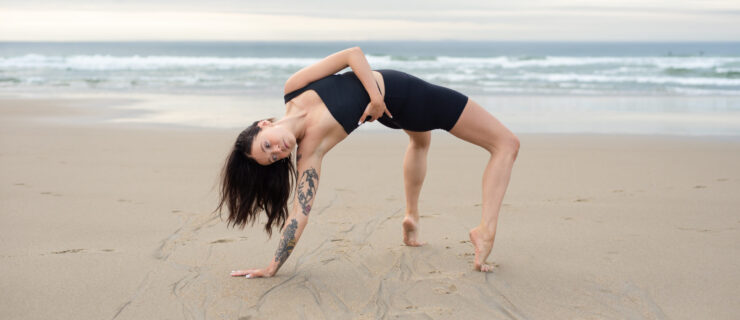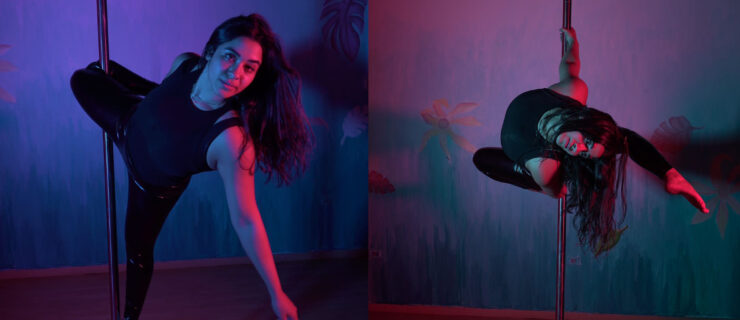What The World Needs Now Is Dance
“I’m sorry, but I just can’t possibly give you the amount of money you’re asking for.”
My heart sinks at my director’s final response to my salary proposal. She insists it’s not me or my work, there is just no money in the budget. My disappointment grows when handed the calendar for Grand Rapids Ballet’s next season with five fewer weeks of work.

The author performing One by Uri Sands. Photo by Ryan Jackson, courtesy Flachs
Why is there not financial support to offer a contract longer than 60 percent of the year? Why do the curtains open on our Sunday matinee to reveal a checkerboard of empty seats? What are we doing here if there is no demand for the service we provide as dancers?
I’ve never been one to support selling people something they don’t need. But I would argue that the world does need dance; people just don’t realize it.
Our scattered, exhausted, overstimulated minds need the purity of live movement, the focus of a show. When someone walks into the theater they silence their phone. They hone in their senses on the box of light in front of them. The rest of the world falls away for a short time and they’re transported into new ideas; beauty, entertainment, pain, sadness.
When I tuck myself into the safety of a wing and watch my fellow dancers, I can forgo the demands of life and lose myself in their steps. These quiet moments in the darkness of backstage are an exercise in mindfulness. They allow me to surrender to the beauty of the world unfolding under the lights. I have no responsibilities in that moment other than to sit and watch. As a variation finishes and applause permeates the silence, I’ll return to reality, sometimes with new inspiration for my upcoming entrance or with added clarity about a problem I’ve been mulling over for some time.
Dance offers a new perspective to view the world. So much of our thinking is done with words. Social justice movements organize around reclaiming language, redefining words, creating vocabulary. We read, write, text, call and speak every day. But not everyone’s brain works best with linguistics, and even those who excel at language have trouble communicating in different cultures or expressing something that linguistics can’t do justice.
Dance can bridge this gap. Steps conveyed on stage can embody and transmit feelings to the audience, producing an incredible intimacy that takes ages to build in daily relationships. The guardedness and baggage around language (proper grammar, politically correct speech, different vocabularies) fall away when we communicate with movement. Ideas are shared that may be difficult to articulate, but are deeply understood.
I recently performed Swing, a piece by Olivier Wevers about suicide and depression. These topics, as charged as they are, are difficult to discuss, but the tension of the choreography aptly communicated the struggles of depression. This beautiful piece didn’t tell the audience what to think, but viscerally showed them how it can feel to be so deeply hurt and hopeless. It was an uncomfortable piece, both to watch and perform, but left viewers with a deep empathy.
Sometimes, the movement itself is therapeutic. As any professional dancer knows, life doesn’t calm down just because it is a show week, and one year I went through a breakup right before a performance of Swan Lake. I could channel all my sadness into the portrayal of the poor, cursed swans, infusing their torment with a little of my own grief.
The moments dancers create onstage are fleeting: That is precisely what makes them treasures. The combination of factors that come together to create a show can never be recreated again—there are too many variables. Therefore, every single viewer leaves with a party favor. They get to hold on to their specific perspective of that evening’s unique experience.
The world needs dance. In this age of technology and online interactions, we need a reminder of the importance of physical interaction and the range of communication that our bodies, in the flesh, can accomplish. We need the opportunity to silence the buzz and pings of constant notifications, and instead plug into real-time theater. We need the sense of purpose that investigating a theme, attending to beauty or watching a story can provide.
Dance needs the world. An audience that pays attention, relates what’s on stage to life at large, and remembers to value movement and physicality over constant entrapment in the intellect.
Luckily, it’s a mutually beneficial relationship.




